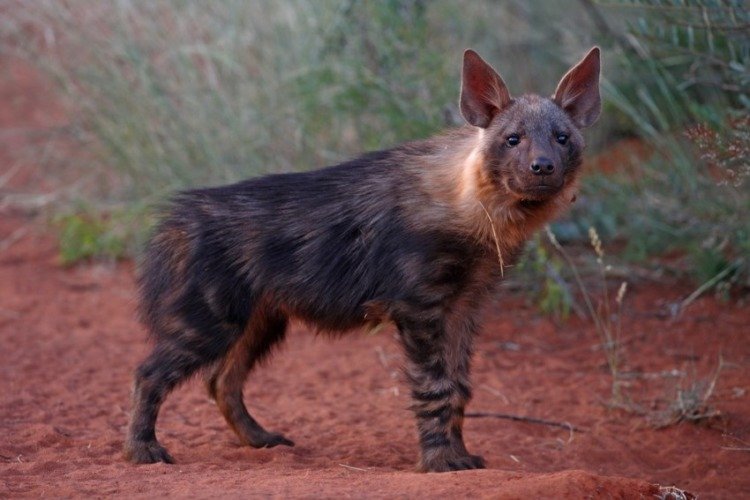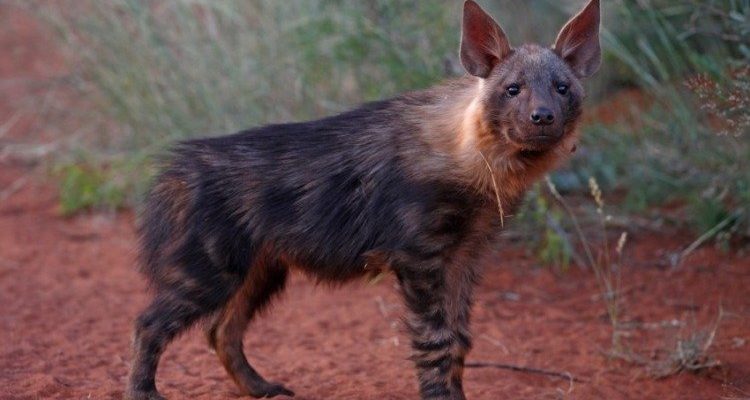
Honestly, the brown hyena isn’t the aggressive predator you might expect from its relatives. Instead, it has a reputation for being quite shy and elusive. So, if you’re worried about a surprise encounter while hiking in the wilderness, let me explain what you really need to know about these fascinating animals and their interactions with humans.
Understanding Brown Hyenas
Brown hyenas are not your typical hyenas. Unlike their more famous spotted cousins, these creatures have a distinct look with darker fur and longer hair. Typically found in dry regions like the Kalahari Desert, they thrive in areas where few other predators can. Their dietary habits also set them apart; they primarily scavenge rather than hunt. So, instead of chasing down prey, they’re often cleaning up after other animals.
You might be surprised to learn that brown hyenas are social animals, often living in small family groups. They communicate using a variety of vocalizations, body language, and scent markings. This social structure helps them thrive in harsh environments where food can be scarce.
As scavengers, they play a vital role in their ecosystem. By consuming the remains of dead animals, they help keep the environment clean and reduce the spread of disease. So, while they might not seem like your friendly neighborhood animal, they’re essential for maintaining balance in nature.
Behavioral Traits of Brown Hyenas
When it comes to behavior, brown hyenas are generally cautious creatures. They tend to avoid interactions with humans whenever possible. Here’s the thing: they’re not looking for a showdown. Their first instinct is to retreat rather than confront. This makes them somewhat less dangerous than other wild animals that might attack if threatened.
In the wild, they are primarily nocturnal, meaning they’re most active during the night. This lifestyle helps them avoid encounters with larger predators and humans alike. When they do come across human settlements, they usually stick to the shadows, foraging for scraps rather than looking for trouble.
While they have powerful jaws and teeth, equipped for crushing bones, they rarely need to use their strength against humans. Most incidents involving brown hyenas are more about misunderstanding than outright aggression. Still, it’s wise to respect their space, just as you would with any wild animal.
Common Myths About Brown Hyenas
Despite their somewhat ominous appearance, many myths circulate about brown hyenas and their dangers to humans. One common misconception is that they’re aggressive scavengers that will attack anyone who dares to approach them. In reality, this couldn’t be further from the truth. Most brown hyenas are fearful of humans and will actively avoid them.
Another myth is that they are rabid or carry diseases. While, like all wild animals, they can carry certain illnesses, brown hyenas are not more dangerous in this regard than other wildlife. Proper safety measures and awareness of your surroundings can significantly reduce any risks.
So, if you happen to spot one of these intriguing creatures while exploring their habitat, remember that their first choice will always be to escape rather than engage. Mutual respect is key when interacting with any wildlife.
Human Encounters with Brown Hyenas
While direct interactions are rare, there are times when brown hyenas may come close to human activities. In some regions, they have adapted to scavenging around farms or campsites. This can create tension, especially if livestock is involved. Farmers often view them as a threat, but in many cases, effective deterrents can minimize conflicts.
To reduce encounters, it’s essential to keep food secured and avoid leaving scraps around. Brown hyenas are opportunistic and will take advantage of any easy meal they can find. By being smart about waste management in rural areas, humans and brown hyenas can coexist without trouble.
In rare instances, if a brown hyena feels cornered or challenged, it might defend itself. This is more likely to happen if the animal is protecting its young or a food source. It’s crucial to stay aware and understand that any wild animal can react unpredictably when feeling threatened.
Conservation Status and Protection
The brown hyena is classified as near threatened by the International Union for Conservation of Nature (IUCN). Habitat loss, hunting, and changes in land use pose significant threats to their populations. Conservation efforts are underway to protect these unique animals and their habitats.
Removing misconceptions about brown hyenas can play an essential role in their conservation. By educating communities about these animals and promoting coexistence strategies, we can help ensure that they thrive in the wild. Plus, watching them in their natural habitat can be a breathtaking experience for wildlife enthusiasts.
Many researchers are actively studying brown hyenas to gather more data about their behavior and ecology. The more we learn, the better equipped we are to protect them.
In summary, the brown hyena is not a danger to humans in the traditional sense. Their shy nature, scavenging habits, and preference for avoiding conflict make them less of a threat compared to other wildlife species. Understanding and respecting the space of these animals is key to peaceful coexistence.
So, if you ever find yourself lucky enough to catch a glimpse of a brown hyena on your adventures, take a moment to appreciate their role in the ecosystem. By treating them with respect and promoting awareness, we can ensure that these fascinating creatures continue to roam the African landscapes for generations to come.

